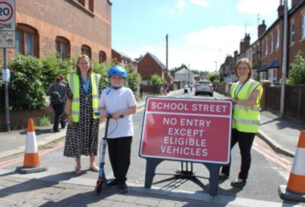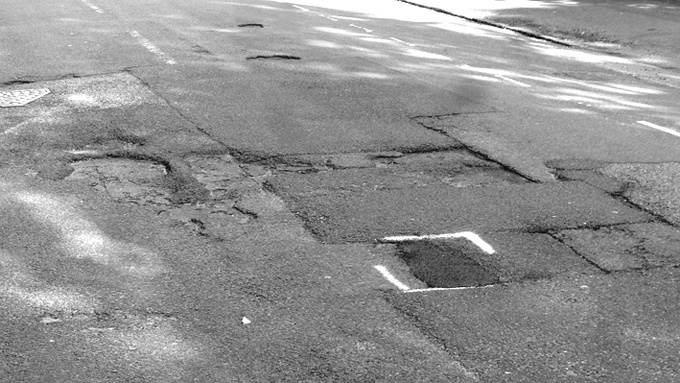
I remember some years ago a Zimbabwean colleague told me a joke that was doing the rounds in his home country. It went like this.
Question: how do you spot a drunk driver in Harare?
Answer: he’s the one driving in a straight line.
The joke was in the context of the dire economic situation in Zimbabwe resulting in roads that were a mosaic of potholes.
Nowadays, when I cycle down Oxford Road I wonder if the drivers following me think that I am drunk – weaving back and forth searching for a benign thread of tarmac that won’t send a succession of jolts through my forks, arms and spine.
A few days before the local elections I put this issue to my ward Councillor, who is also the Chair of the Cycle Forum and the Traffic Management Sub-Committee. The response was that “spending on road and pathway maintenance from the Government to Local Authorities is seriously underfunded”.
So there we have it, we can no longer expect road surfaces that, living in a rich, developed country, we used to take for granted.
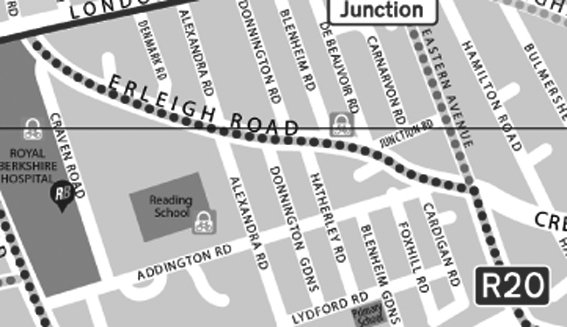

Reading Borough Council (RBC) has an annual road-resurfacing programme, but it is not sufficient to keep pace with the rate of road deterioration. The worst potholes eventually get fixed, but the thousands of minor holes, ruts, cracks and sunken ironworks are with us for the foreseeable future.
Councils are not obliged to send an inspector for potholes that are less than 40mm deep. These may not be big enough to bother a bus, but cumulatively such defects make our roads unfit for cycling.
So that’s the complaint, but what do we suggest, short of additional funding from the Government?
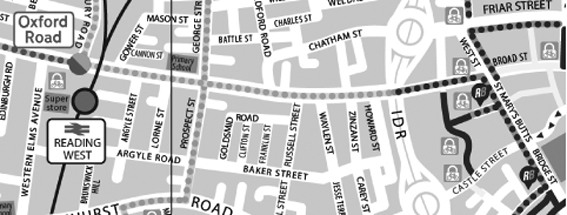
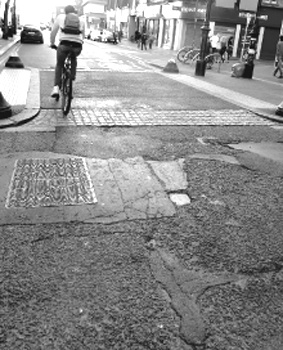
One of the principles of modern democracies is that government spending is best targeted at those most in need of the benefit; for example, free school meals are not given to children of high earners. So why does this philosophy not also apply to roads?
The Council has limited funds for road maintenance; cyclists are by far the group of road users who are worst affected by poor road surfaces; the Council wants to encourage cycling.
For me it’s hard to escape the logic of targeting road maintenance funding at those routes which are most used by cyclists, and Reading’s designated cycle network would be a good place to start.
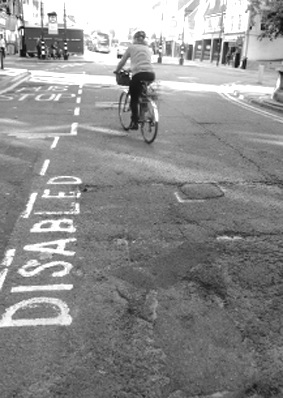
RBC has a Highways Asset Management Policy that’s available for viewing on the Council web site. It states that the Council will assess the level of service required and the investment in the maintenance, renewal and replacement of assets to meet the level of service.
Several years ago we suggested at the quarterly Cycle Forum with RBC that the management policy should take into consideration whether a road was part of the Council’s designated cycle network in assessing the level of service required, and consequently the priority for resurfacing. The suggestion was given very short shrift.
RBC established its designated cycle network nearly a decade ago. In that time it has never really progressed from being just an exercise in mapping and signing; moreover the designated routes encompass some of the worst roads in the borough.
Sometimes it takes a decade or more for a suggestion to make Reading more cycle-friendly to gain currency. Maybe the time is coming when RBC will review its road maintenance policy in the context of encouraging cycling.
So come on Reading, take some pride in your cycle routes and make them fit for cycling.
Keith Elliott RCC Secretary


